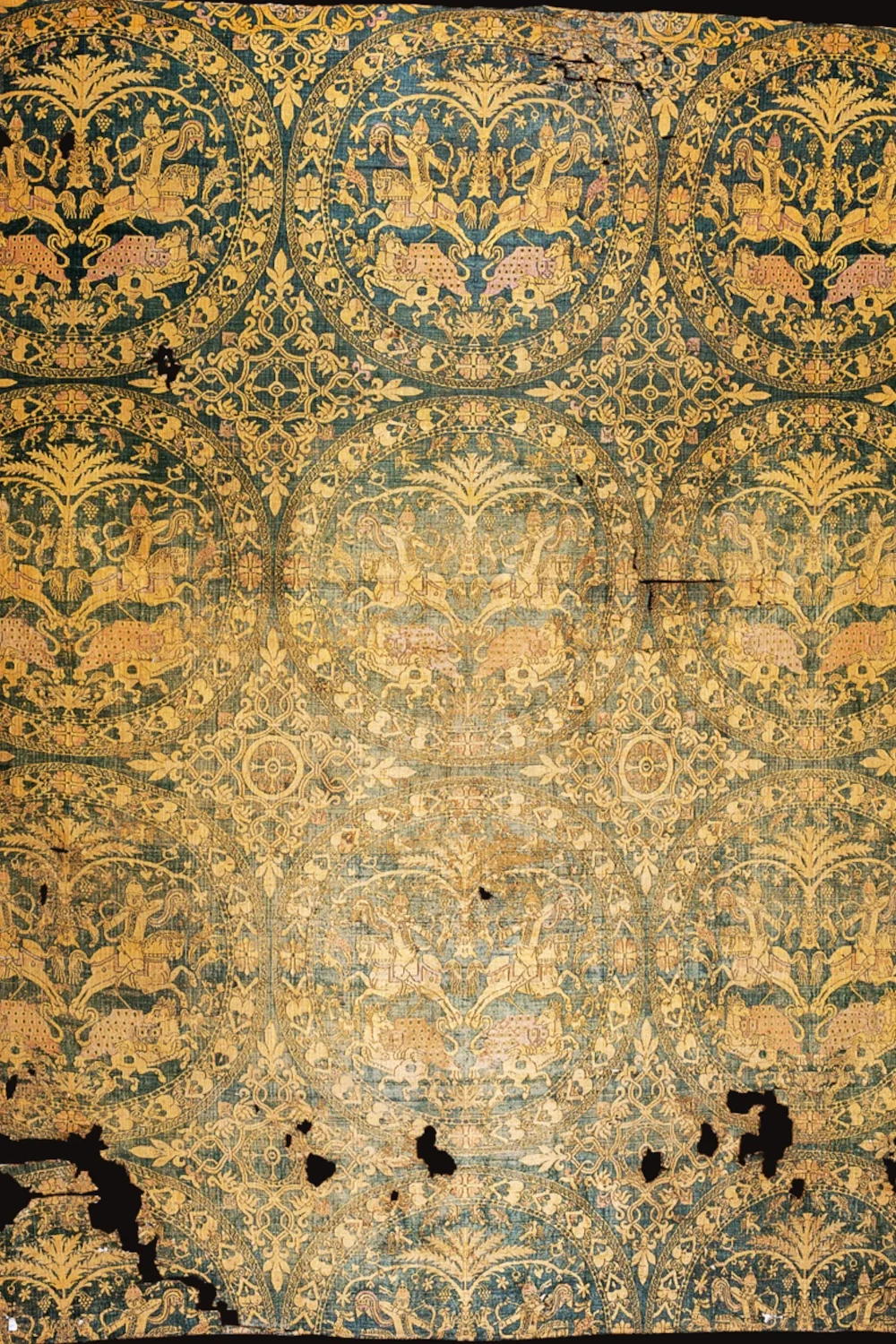Descrizione: Il tessuto, riscoperto nel 2006, era stato conservato fino al 1959, per secoli nella cattedrale all’interno del sarcofago ove si conservano le spoglie del patrono cittadino Sant’Emidio.
Il disegno č formato da tondi con all’interno scene di caccia a cavallo ed č caratterizzato da diversi colori quali porpora rosa e rossa, ocra e verde ed č databile tra l’VIII ed il IX secolo, di probabile provenienza siriana.
L’iconografia presenta una simmetria speculare e interessanti i rapporti chiastici di matrice iranica, il motivo principale interno agli orbicoli rappresenta due arcieri a cavallo con tiare ad antenna, speculari e con andamento divergente, mentre scoccano all’indietro il colpo detto “persiano” mirando nella direzione opposta.
I personaggi rappresentano l’albero della vita intorno alla quale l’identitŕ degli opposti si fronteggia, uccidendo contemporaneamente il bene e il male rappresentati dal felino maculato che azzanna l’onagro mentre la cornice riporta motivi floreali.
Tecnica: Seta operata
Dimensioni: 150×122 cm
Source: Museo Diocesano Ascoli Piceno
|
Description: The textile, rediscovered in 2006, had been preserved for centuries in the cathedral until 1959, inside the sarcophagus containing the remains of the city's patron saint, Saint Emygdius.
The design consists of circles with hunting scenes on horseback and is characterized by different colors such as pink and red purple, ochre, and green. It dates to between the 8th and 9th centuries, and is likely of Syrian origin.
The iconography features mirror-like symmetry and interesting Iranian-inspired chiastic relationships. The main motif within the circles depicts two mounted archers wearing horn-shaped tiaras, mirrored and diverging, firing backwards the so-called "Persian" [Parthian] shot, aiming in the opposite direction.
The figures represent the tree of life around which the identities of opposites confront each other, simultaneously killing good and evil, represented by the spotted feline biting the onager, while the frame features floral motifs.
Technique: Silk
Dimensions: 150 x 122 cm
Ascoli Piceno Diocesan Museum
|

